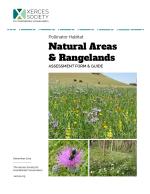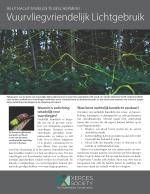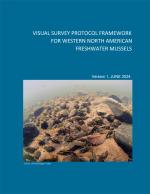As a science-based organization, the Xerces Society produces dozens of publications annually, all of which employ the best available research to guide effective conservation efforts. Our publications range from guidelines for land managers, to brochures offering overviews of key concepts related to invertebrate conservation, from books about supporting pollinators in farmland, to region-specific plant lists. We hope that whatever you are seeking—whether it's guidance on making a home or community garden pollinator-friendly, advice on developing a local pesticide reduction strategy, or detailed information on restoring habitat—you will find it here!
Find Publications
Use the search functions to sort by publication type (books, guidelines, fact sheets, etc.), location, and/or subject (agriculture, gardens, pollinators, pesticides, etc.).
To see the full list of brochures available for download, click here.
Assessment Form and Guide
This pollinator habitat assessment guide is designed for a single site on a farm or agricultural landscape.
Pollinator Habitat Assessment Guide
This pollinator habitat assessment guide is designed for natural areas and rangelands.
La luz artificial nocturna, LANA en forma abreviada, es probablemente uno de los principales causantes de la disminución de luciérnagas. La mayoría de las luciérnagas del mundo se comunican entre sí utilizando señales de luz bioluminiscente en forma de destellos, parpadeos o brillos. Estas especies están activas durante el crepúsculo o después de que anochece, de manera que las luces artificiales que se encienden durante estas horas pueden dificultar que estas luciérnagas se vean entre sí.
Artificial light at night, or ALAN for short, may be one of the main drivers of firefly declines. At least 80% of the firefly species found in the United States and Canada communicate with each other using bioluminescent light signals in the form of flashes, flickers, or glows. These species are active at dusk or after dark, and artificial lights that are on at this time can make it harder for them to see each other. It may also make fireflies more vulnerable to predators that would otherwise be repelled by their light.
Nachtelijk kunstlicht is mogelijk een van de grootste oorzaken voor krimpende populaties vuurvliegjes. Europese soorten vuurvliegjes gebruiken bioluminescentie en maken zo zelf licht. Door te flitsen, knipperen of te gloeien communiceren ze met elkaar. Deze soorten zijn actief bij schemering of in het duister. Kunstlicht kan het dan moeilijker maken voor hen om elkaar te zien. Het kan vuurvliegjes ook kwetsbaarder maken voor roofdieren die normaal afgeschrokken zouden worden door hun licht.
Version 1, June 2024
This document is intended to serve as a resource for biologists and other professionals tasked with conducting surveys or research studies and to ensure that future survey efforts will improve the ability to compare data across the many watersheds and multiple U.S. states and Canadian provinces in which these species of freshwater mussels occur.
Washington State
The objective of this conservation strategy is to identify geographic areas within the state of Washington with the highest potential to support rare and declining bumble bee species and provide guidance and recommendations for management of those areas. Maintaining sufficient populations of each focal species is essential to the long-term persistence of these animals. This will require protecting and enhancing habitat for foraging, nesting, and overwintering, while ensuring connectivity between habitat areas, across jurisdictions.
An annual report of the Migratory Dragonfly Partnership









